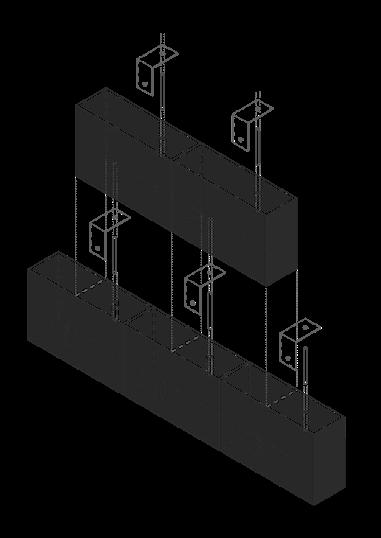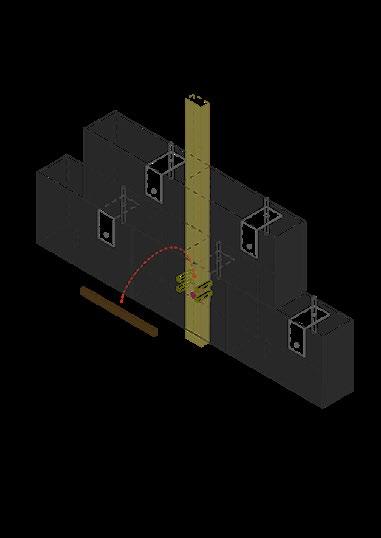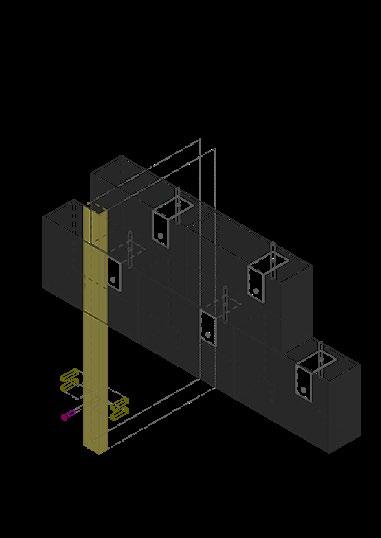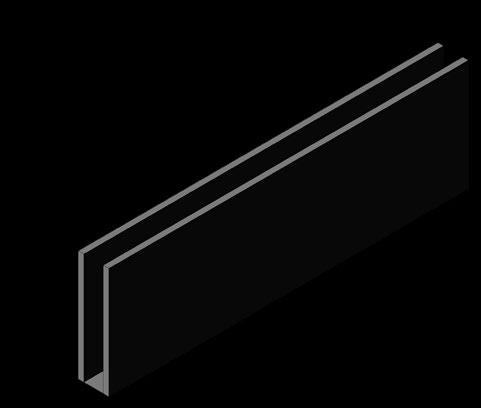
2 minute read
The Machine of expression
The Wall
a. The Wall separates two spaces b. The Wall is also a uniting point of two c. In Authoritarian regimes presence only one ideology can have the place d. “Other” is hidden from e. Discerning eye and an interested mind can find hidden “other” f. Once founded, it can grow and spread around

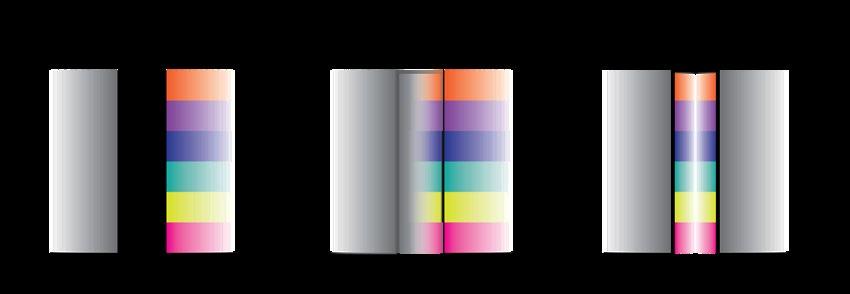
In the realm of architecture, a wall serves two purposes: dividing space and supporting the roof. While the support of the roof is a technical issue, the separation of space also reflects social behavior between individuals. In either case, the wall signifies a boundary between two territories, highlighting the power dynamics between them. Thus, the architecture of the wall takes on a symbolic meaning as a representation of the struggle between the “attacking” outside and the “safe” inside.
In the political context, walls represent physical and metaphorical barriers that divide communities and people. Throughout history, walls have been used as a means of defense, but they can also serve as tools of exclusion, oppression, and isolation. For instance, the Great Wall of China was erected to protect against foreign invasions, but it also restricted movement of people and goods within China. Similarly, the Berlin Wall, built during the Cold War, symbolized ideological divide between East and West and separated families and communities for decades.
In authoritarian regimes, dissenting opinions are not tolerated and are therefore suppressed or hidden. Externally, the regime’s discourse is reflected in monumental, unified structures that do not divide, since only one opinion is permitted. The “other” is relegated to the inside, where only a discerning eye and an interested mind can gain access, to learn, grow, exchange and spread the information.
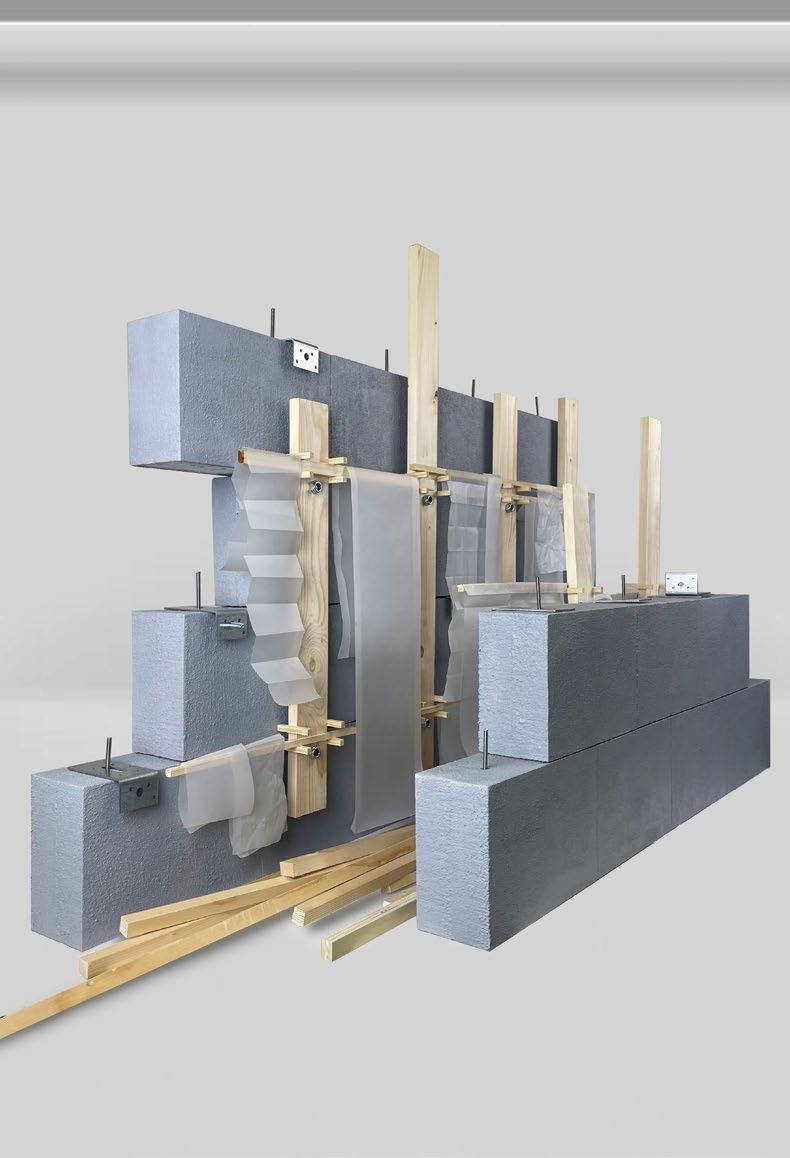
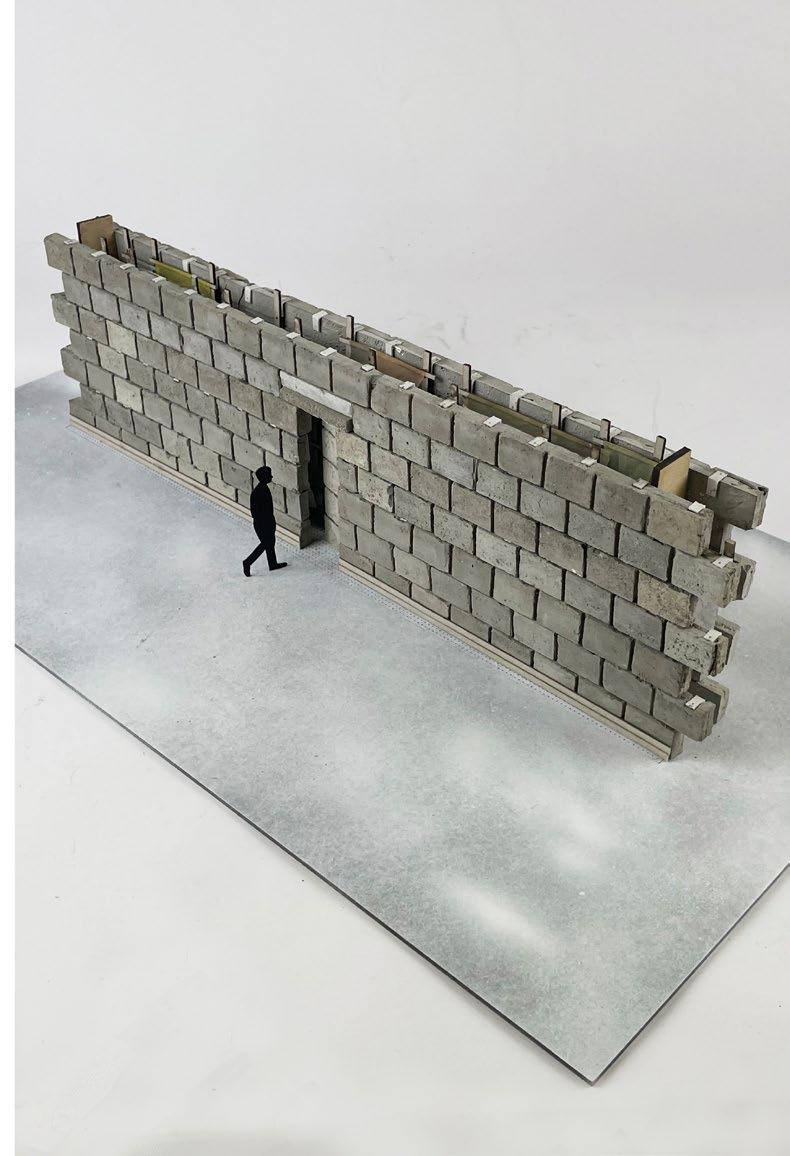

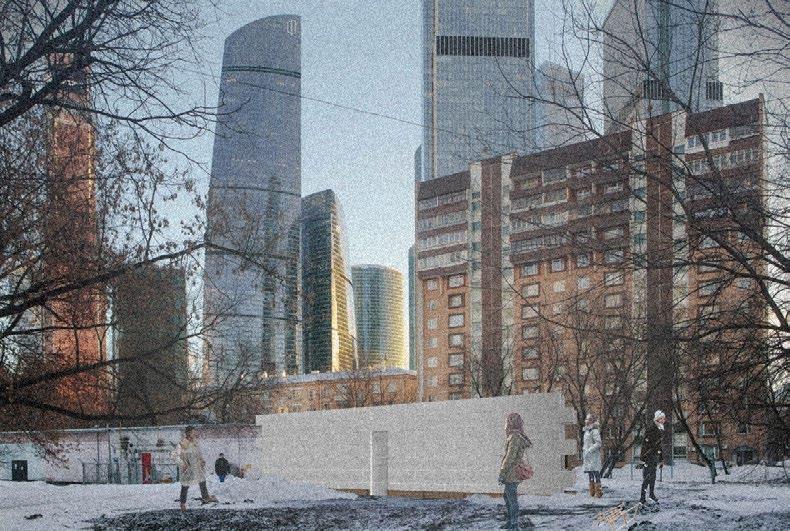
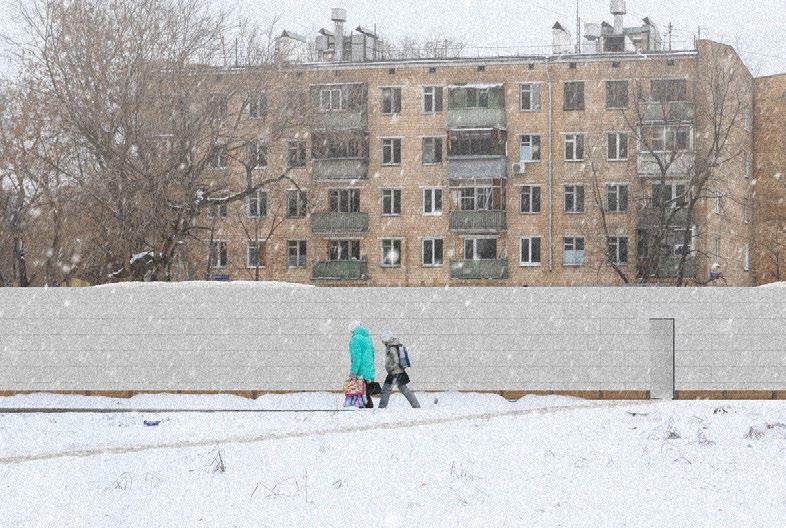
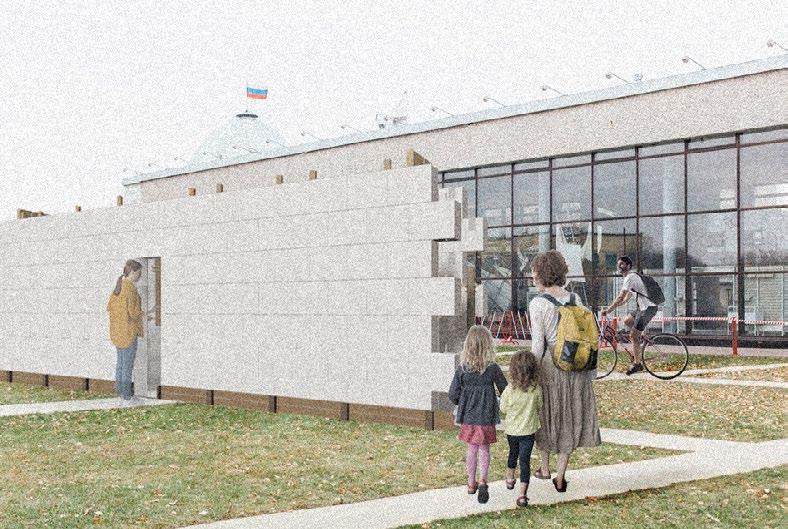
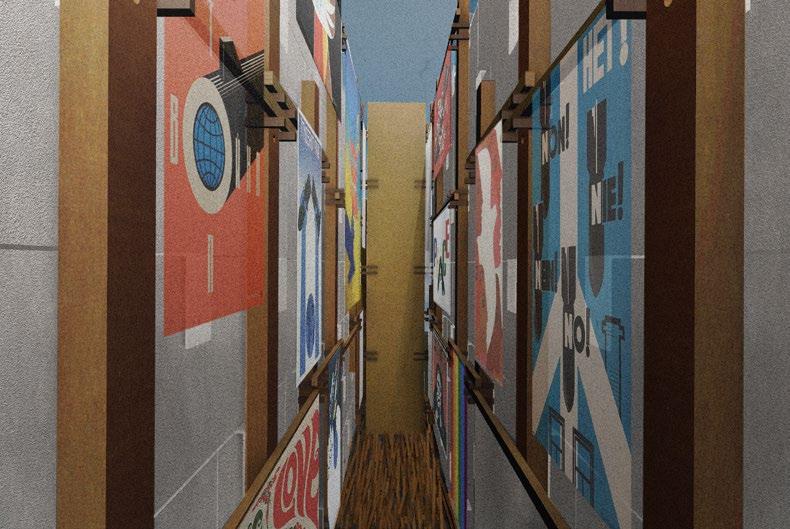
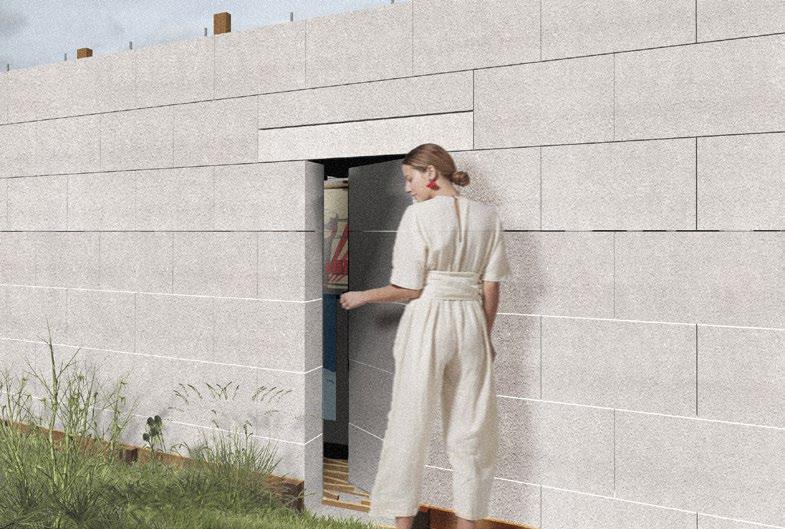
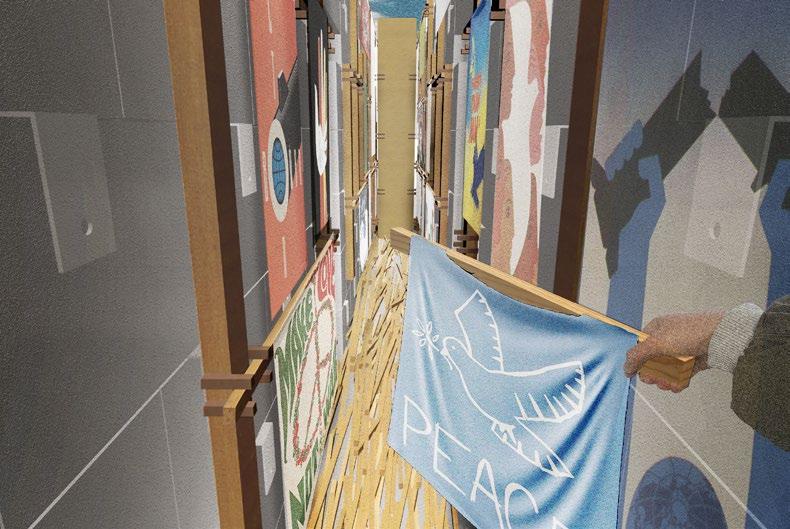
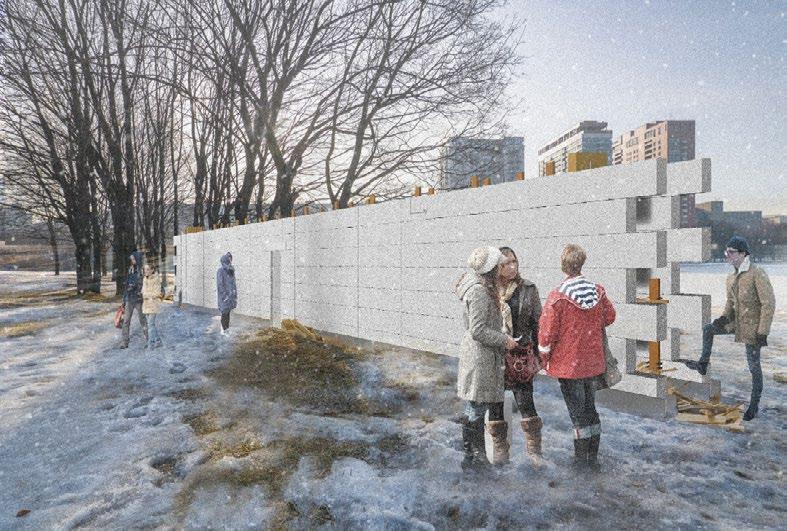
Since the Expression Machine is meant to be a free-standing object, we tried to choose materials that best reflect the types of walls that are familiar to the average person and that actually divide the space. One such material that is widespread, easy to transport and process is aerated concrete blocks. In Russia, they are often used for the construction of interior partition walls, as well as the construction of private houses.
Often, the material is encased in wooden battens to hang the exterior façade or the trim panels. We used that technique in the internal volume of the wall to underline the fact that the inside wall space, although different, is still a part of the unfinished construction.
The aerated concrete blocks themselves are relatively dull and inexpressive material, and it was perfectly suited to express the one-sidedness, lack of interest in having only one possible opinion or option. The inside of the wall, on the other hand, is covered in brightly coloured posters, working in contrast to the mono materiality of the wall on the outside. Without looking closely at the contents, one notices the abundance of options, the interest and desire to explore.
However, to contrast the monotony of the exterior, we covered the inside of the wall with brightly colored posters that offer an abundance of options and encourage exploration. The posters serve as a reminder that there are always multiple perspectives and possibilities, and that individual expression should be celebrated.
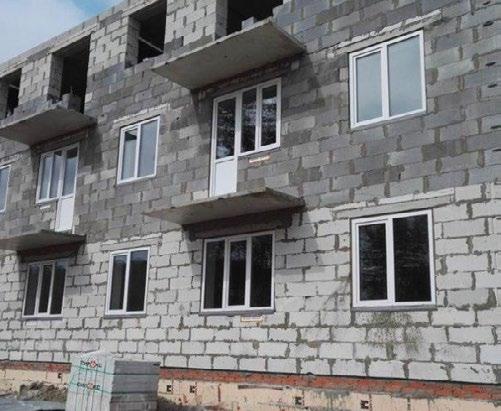
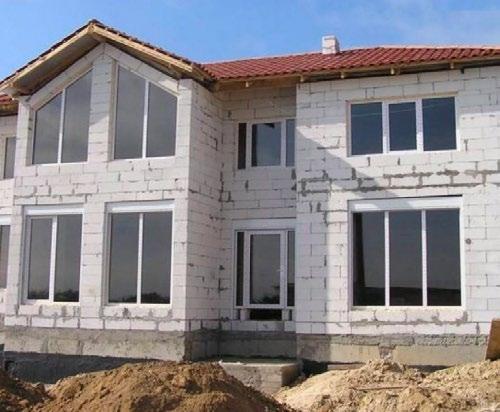
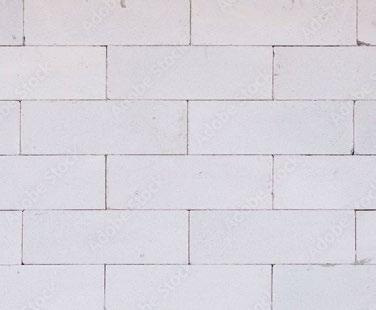

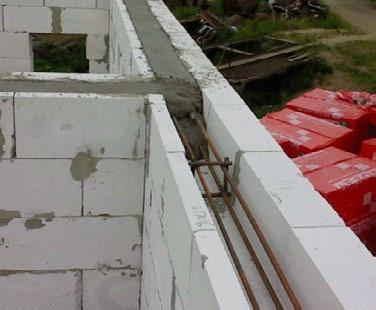

As there are several stages of changing machine locations, the construction is prefabricated and collapsible, unlike the traditional way of assembling blocks on binder mortar or horizontal reinforcement.
Additional holes were made in the blocks which allow reinforcing the blocks with small metal bars by sliding them on top of each other. Additional strength is provided by the construction of wooden beams, which also serve as holders for the posters.
The number and position of the vertical wooden beams can vary, as they are attached by threaded rods and wood nuts to the metal brackets attached to the reinforcement between the blocks.
Posters are attached to small-section horizontal bars that rest loosely on the vertical beams. Posters are variable and will be replaced during the time when the machine will be in use, so it does not require any permanent fixing.
